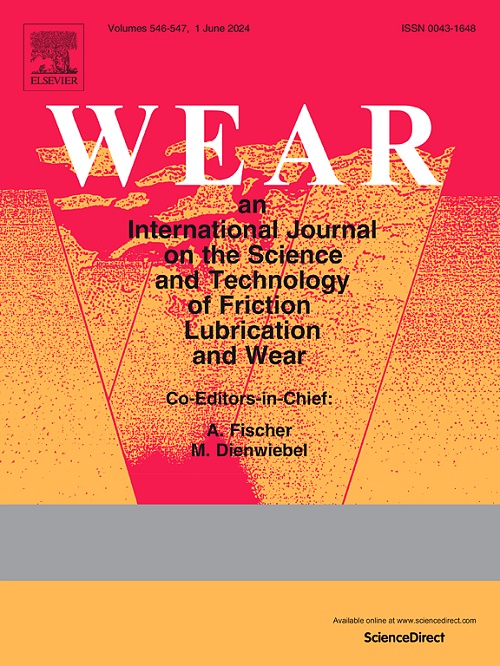Effect of slip on the residual stress and tribological behavior of a class C wheel steel after twin-disc tests
IF 5.3
1区 工程技术
Q1 ENGINEERING, MECHANICAL
引用次数: 0
Abstract
The tribological behavior of rails and wheels is a topic of great relevance to the railway industry. However, simulating the complex interactions that occur in the wheel-rail contact presents a challenge to researchers. In this context, tests using the twin-disc tribometer have emerged as a promising alternative. In the test, it is common for the disc with the higher speed (driving disc) to be used to simulate the behavior of the wheel, while the disc with the lower speed (driven disc) simulates the rail. Nonetheless, many studies base their discussions on the differences in tribological behavior between the wheel and the rail considering only microstructural aspects and the hardness relationship between the materials of the wheel and the rail. This study evaluated the effect of slip rates of 1 %, 3 %, and 5 %, as well as the residual stresses generated, on the tribological behavior of class C wheel steel. To isolate the effects of microstructure and hardness, the same material was used in the fabrication of both discs employed in the tests. The results showed that although both discs were made of the same material, the driving disc exhibited greater wear than the driven disc. This finding is frequently reported in the literature, mainly due to the microstructural differences between the discs; still, this study, which used the same material for both discs, achieved the same result. This highlights the need for further discussion on the causes of wear on the driving disc, as the wear may not be solely attributed to the microstructural effects of the materials, contrarily to what is widely indicated in the literature. The results of this study demonstrate that the different residual stresses on the discs, along with the contact dynamics, play a significant role influencing the tribological behavior of the materials tested in the twin-disc tribometer.
求助全文
约1分钟内获得全文
求助全文
来源期刊

Wear
工程技术-材料科学:综合
CiteScore
8.80
自引率
8.00%
发文量
280
审稿时长
47 days
期刊介绍:
Wear journal is dedicated to the advancement of basic and applied knowledge concerning the nature of wear of materials. Broadly, topics of interest range from development of fundamental understanding of the mechanisms of wear to innovative solutions to practical engineering problems. Authors of experimental studies are expected to comment on the repeatability of the data, and whenever possible, conduct multiple measurements under similar testing conditions. Further, Wear embraces the highest standards of professional ethics, and the detection of matching content, either in written or graphical form, from other publications by the current authors or by others, may result in rejection.
 求助内容:
求助内容: 应助结果提醒方式:
应助结果提醒方式:


